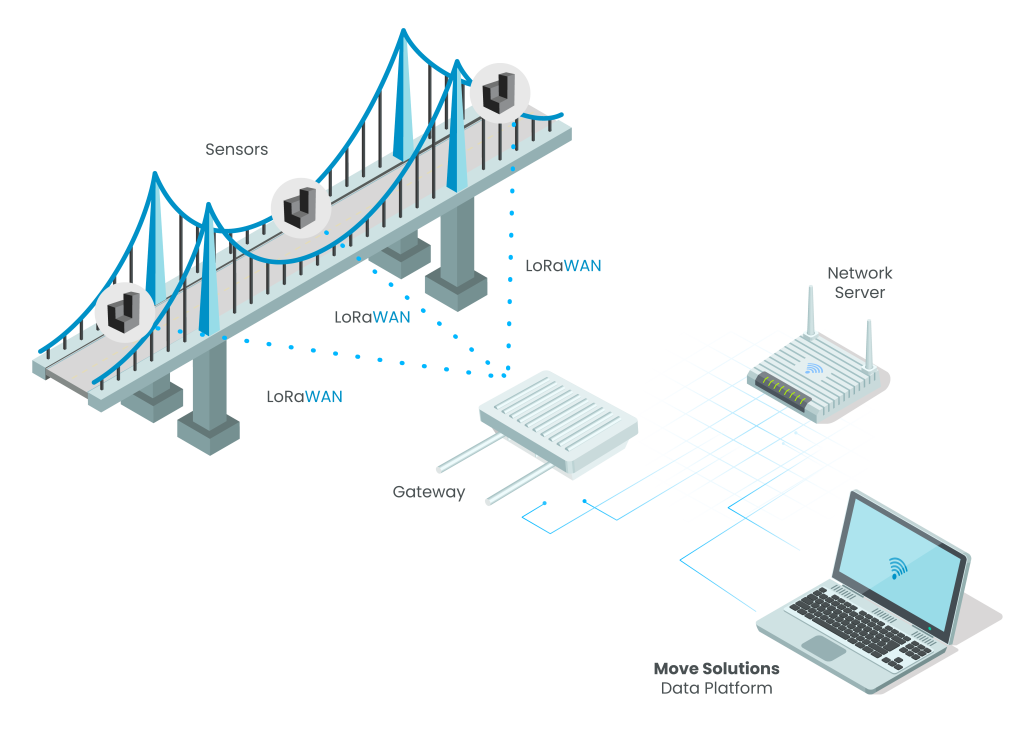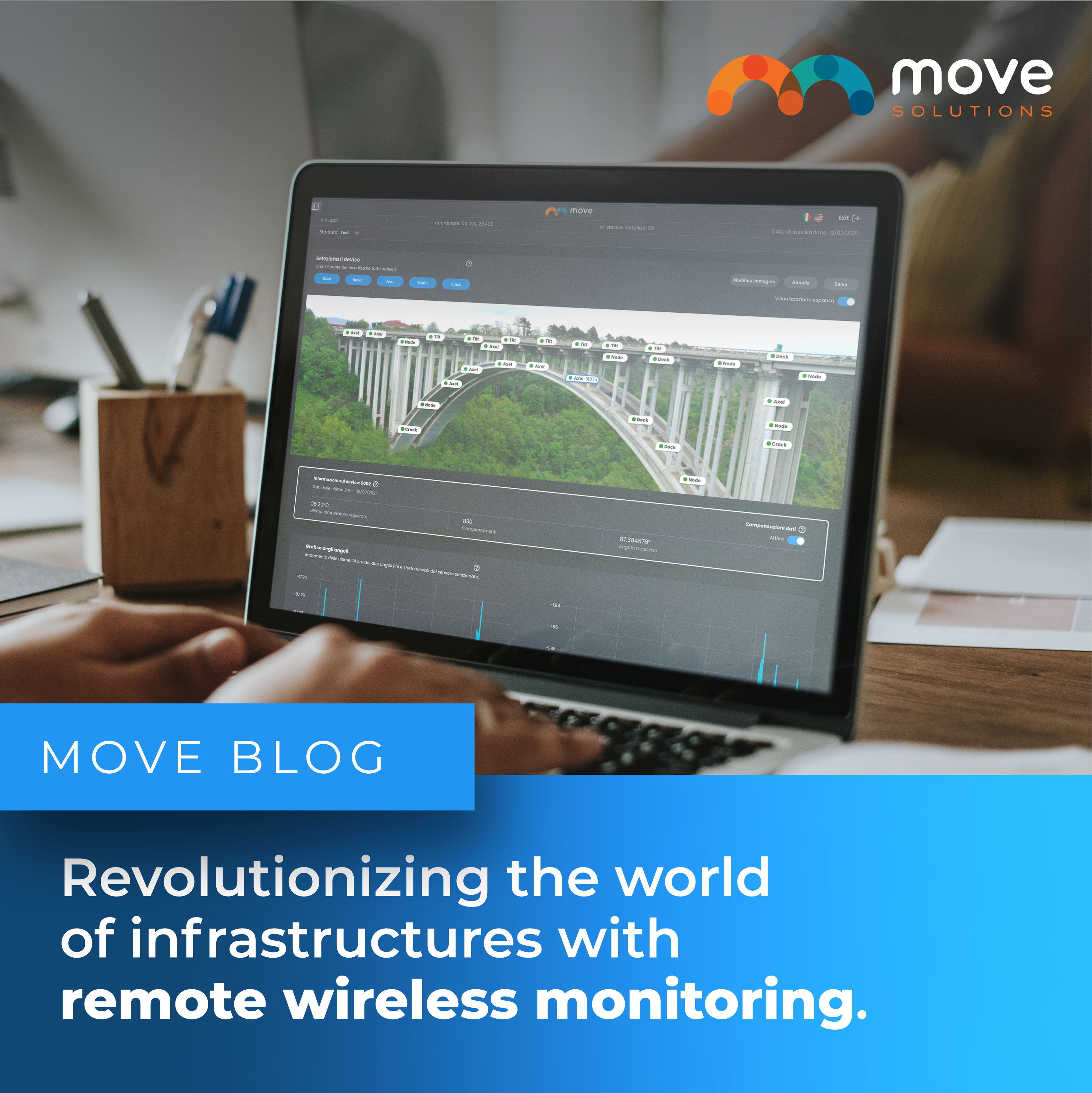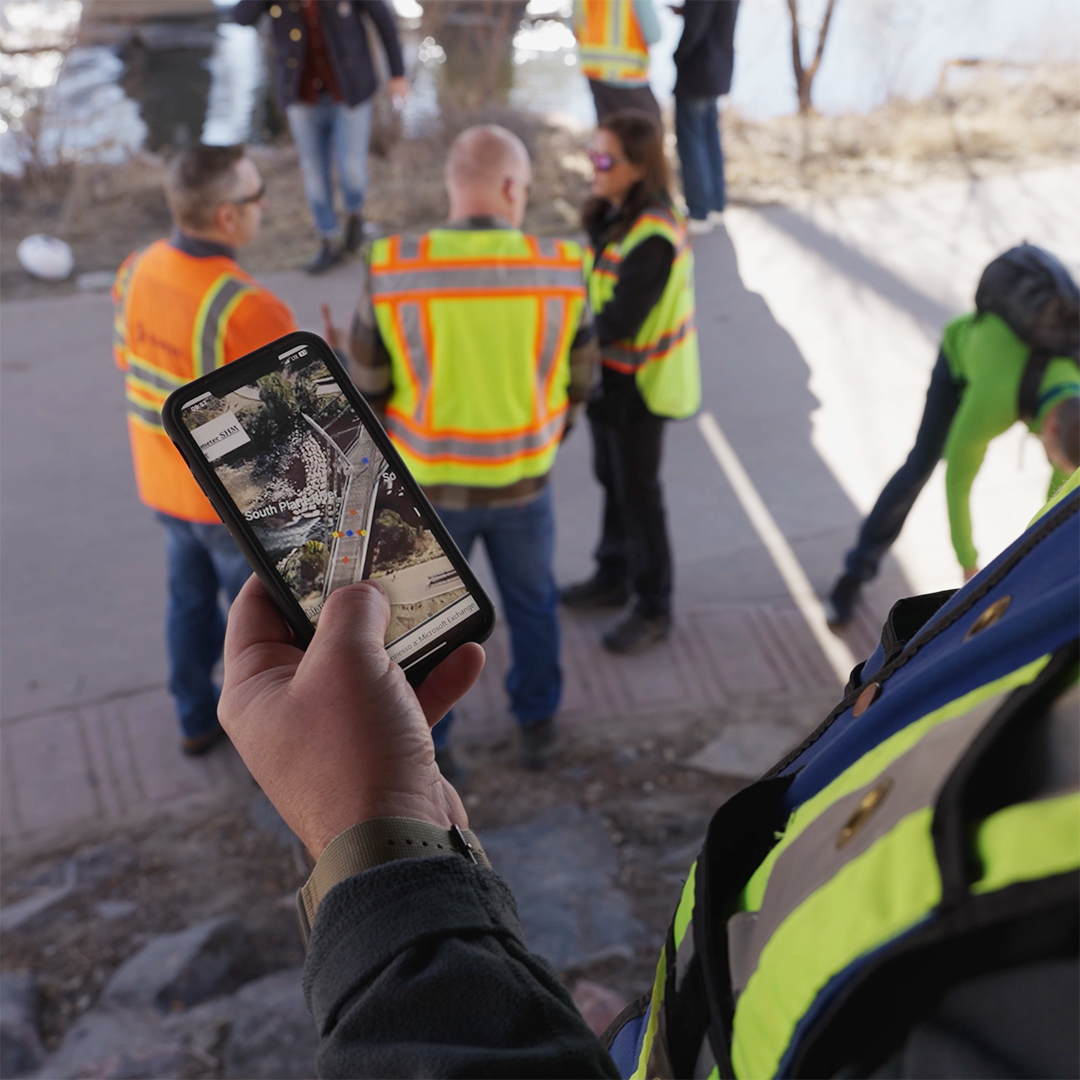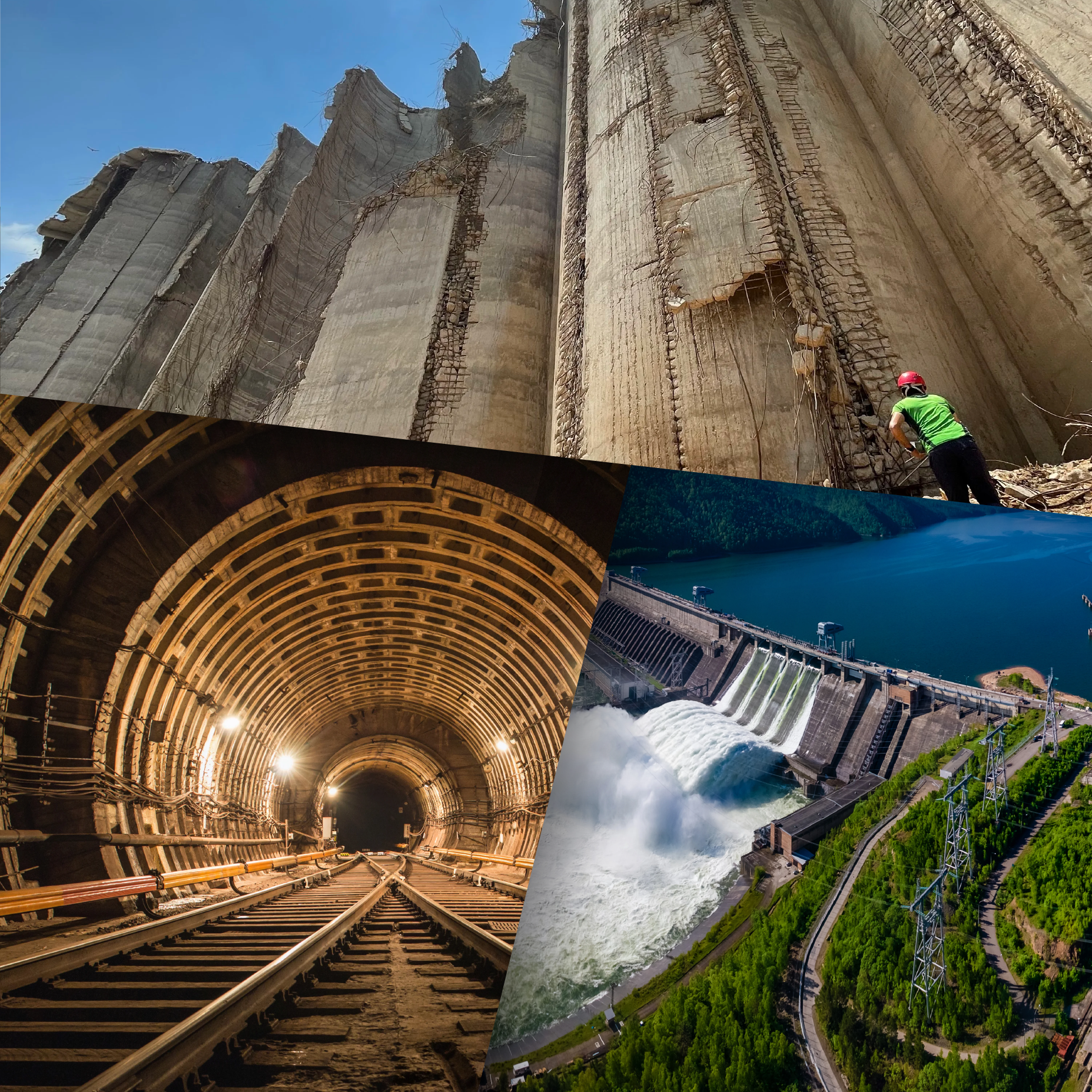Revolutionizing the world of infrastructures with remote wireless monitoring
April 2022

Remote vs on-site monitoring
While traditional methods periodically require people on site to assess the health of the structure, there are now new, innovative sensors that are revolutionizing the way how monitoring is done. They are connected to a cloud platform where all the significant data recorded about the structure is stored and made available in real time to you, at any given moment, from the comfort of your own office.
There are many benefits of remote monitoring and they become even greater for projects that last over long periods of time.
Key benefits:
- Continuous data that can be accessed remotely
- Ability to manage multiple projects at the same time
- Reduced risk of damage: alerts are sent on your phone if anomalies are detected
- Compliance with standards: the possibility to set alarm thresholds for vibration levels helps to comply with national requirements
- Ideal to detect environmental and seasonal variations, understanding how they affect the health of the structure
- Reduced need for site visits
- Reduced travel costs
- Easier data interpretation: thanks to graphs and to algorithms that make them more understandable
- Safer: people spend less time exposed to hazards

Wireless vs. wired monitoring:
Remote monitoring alone has many benefits, but innovation hasn’t stopped there. When first introduced to the industry, remote monitoring was still based on wired sensors. Now, wireless systems are quickly taking over. In fact, they offer significant operating and cost advantages, which is making them become prevalent in many applications.
Key benefits:
1 – No wiring
Wired systems may require hundreds of meters of cable to connect different devices. Wireless systems, on the other hand, are powered by battery or by solar panels, which eliminates the need for hardwiring instrumentation.
2 – Reduced installation cost
Wired installations can be extremely expensive, especially when sensors are distant from each other and complex equipment is involved. Moreover, if a system needs to be repaired or reconfigured, new cables, trenching, hardware and labor are required. Installing a wireless system is not only much cheaper, but new sensors can be easily added to meet new requirements without adding new hardware.
3 – Suitable for any environment
Sometimes monitoring projects incur problems when wires need to go through properties not owned by the company. However, wireless sensors guarantee long-range and powerful transmission of data even when the signal needs to cross different lands and structures. They can also be left unattended for years without being affected by environmental factors such as rain, snow, ice and dust storms.
In fact, while wires are exposed to cuts, dirt and corrosion, wireless systems are less affected by environmental conditions and, when a problem occurs, they can send an alert that notifies if data is no longer transmitting.
4 – Adaptable to changing needs
With a wireless monitoring system, sensors can be added or removed according to the needs of the monitoring project. If the project expands and different points of the structure need to be monitored, new devices can just be placed wherever it is required and, once activated, they will start communicating with the whole system. Otherwise, depending on the project, the same sensors can be used to monitor different parts of the structure at different times.

Overall, remote wireless structural monitoring is more versatile and more cost-effective if compared to the traditional way involving wires and more frequent on-site visits. Last, but not least, it is also more sustainable: less site travels, less people involved and no complex installations substantially reduce pollution emissions.
We offer remote wireless monitoring for all types of infrastructures: bridges, railways, tunnels, construction sites, buildings and vertical structures.









